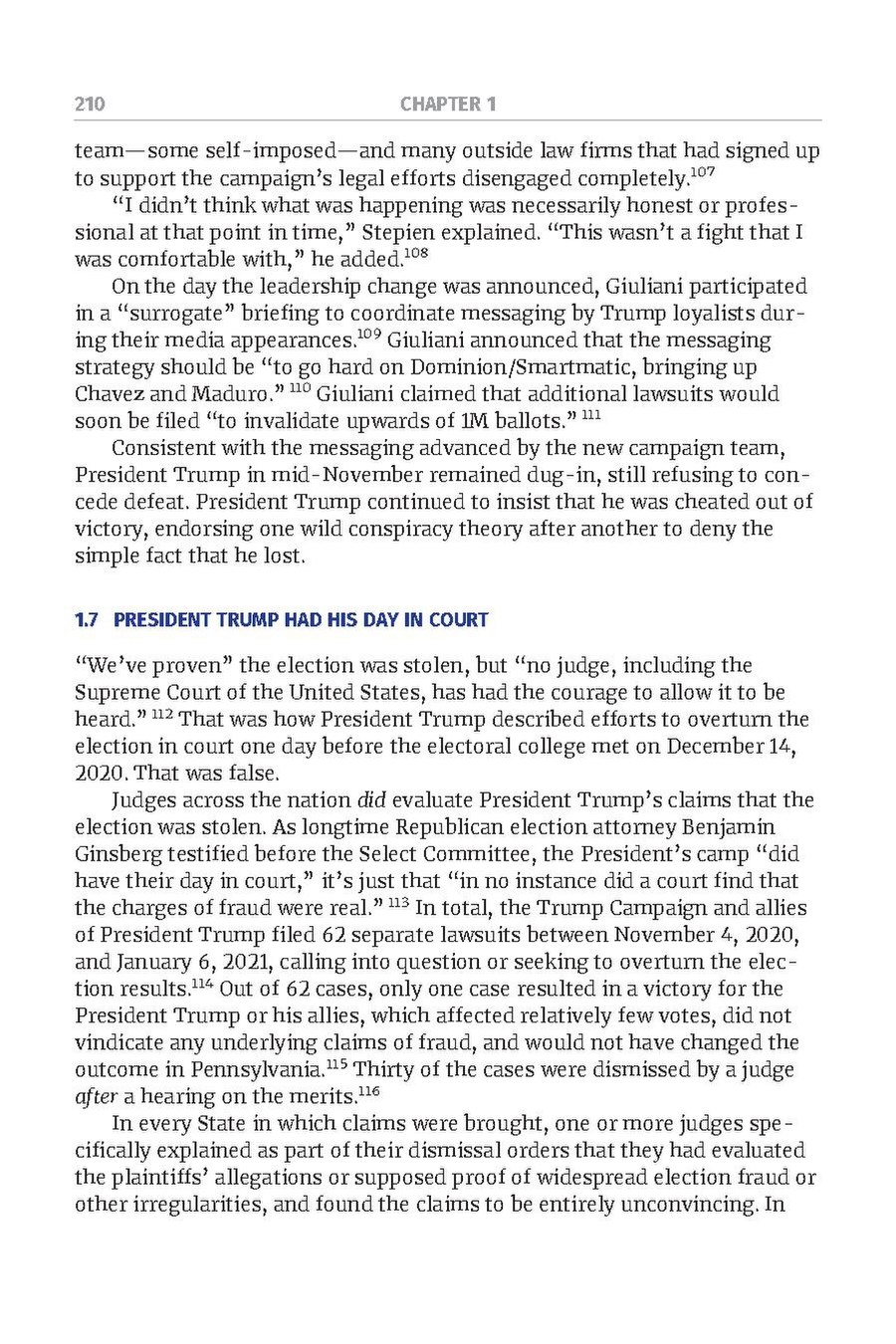team—some self-imposed—and many outside law firms that had signed up to support the campaign's legal efforts disengaged completely.[107]
"I didn't think what was happening was necessarily honest or professional at that point in time," Stepien explained. "This wasn't a fight that I was comfortable with," he added.[108]
On the day the leadership change was announced, Giuliani participated in a "surrogate" briefing to coordinate messaging by Trump loyalists during their media appearances.[109] Giuliani announced that the messaging strategy should be "to go hard on Dominion/Smartmatic, bringing up Chavez and Maduro."[110] Giuliani claimed that additional lawsuits would soon be filed "to invalidate upwards of 1M ballots."[111]
Consistent with the messaging advanced by the new campaign team, President Trump in mid-November remained dug-in, still refusing to concede defeat. President Trump continued to insist that he was cheated out of victory, endorsing one wild conspiracy theory after another to deny the simple fact that he lost.
1.7 PRESIDENT TRUMP HAD HIS DAY IN COURT
"We've proven" the election was stolen, but "no judge, including the Supreme Court of the United States, has had the courage to allow it to be heard."[112] That was how President Trump described efforts to overturn the election in court one day before the electoral college met on December 14, 2020. That was false.
Judges across the nation did evaluate President Trump's claims that the election was stolen. As longtime Republican election attorney Benjamin Ginsberg testified before the Select Committee, the President's camp "did have their day in court," it's just that "in no instance did a court find that the charges of fraud were real."[113] In total, the Trump Campaign and allies of President Trump filed 62 separate lawsuits between November 4, 2020, and January 6, 2021, calling into question or seeking to overturn the election results.[114] Out of 62 cases, only one case resulted in a victory for the President Trump or his allies, which affected relatively few votes, did not vindicate any underlying claims of fraud, and would not have changed the outcome in Pennsylvania.[115] Thirty of the cases were dismissed by a judge after a hearing on the merits.[116]
In every State in which claims were brought, one or more judges specifically explained as part of their dismissal orders that they had evaluated the plaintiffs' allegations or supposed proof of widespread election fraud or other irregularities, and found the claims to be entirely unconvincing. In
